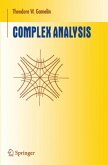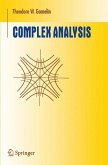Generalized functions are now widely recognized as important mathematical tools for engineers and physicists. But they are considered to be inaccessible for non-specialists. To remedy this situation, this book gives an intelligible exposition of generalized functions based on Sato's hyperfunction, which is essentially the `boundary value of analytic functions'. An intuitive image -- hyperfunction = vortex layer -- is adopted, and only an elementary knowledge of complex function theory is assumed. The treatment is entirely self-contained.
The first part of the book gives a detailed account of fundamental operations such as the four arithmetical operations applicable to hyperfunctions, namely differentiation, integration, and convolution, as well as Fourier transform. Fourier series are seen to be nothing but periodic hyperfunctions. In the second part, based on the general theory, the Hilbert transform and Poisson-Schwarz integral formula are treated and their application to integral equations is studied. A great number of formulas obtained in the course of treatment are summarized as tables in the appendix. In particular, those concerning convolution, the Hilbert transform and Fourier transform contain much new material.
For mathematicians, mathematical physicists and engineers whose work involves generalized functions.
The first part of the book gives a detailed account of fundamental operations such as the four arithmetical operations applicable to hyperfunctions, namely differentiation, integration, and convolution, as well as Fourier transform. Fourier series are seen to be nothing but periodic hyperfunctions. In the second part, based on the general theory, the Hilbert transform and Poisson-Schwarz integral formula are treated and their application to integral equations is studied. A great number of formulas obtained in the course of treatment are summarized as tables in the appendix. In particular, those concerning convolution, the Hilbert transform and Fourier transform contain much new material.
For mathematicians, mathematical physicists and engineers whose work involves generalized functions.








